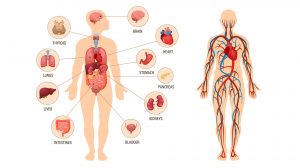Definition
noun, plural: chemosyntheses
The production of a more complex chemical compound by combining two or more simpler chemical entities or precursors
Supplement
Biosynthesis refers to the production of a complex chemical compound from simpler precursors in a living organism. It usually involves an enzyme that will catalyze the reaction). It may also need an energy source (e.g. ATP). Examples of biosynthesis include photosynthesis, chemosynthesis, amino acid synthesis, nucleic acid synthesis, and ATP synthesis.
Chemosynthesis is a biosynthesis performed by living organisms. It is through this process that a more complex chemical compound is produced. It often does so by combining simpler chemical entities or precursors. Examples of chemical synthesis, in particular, include organic synthesis and dehydration synthesis. Chemoautotrophs, for instance, are organisms that perform chemosynthesis. They include certain groups of bacteria such as sulfur-oxidizing gamma proteobacteria, epsilon proteobacteria, and neutrophilic iron-oxidizing bacteria, and certain archaea such as methanogenic archaea. Certain eukaryotes form symbiosis with bacteria that can fix carbon dioxide for them. For instance, the giant tube worms have bacteria in their trophosome that can produce sugars and amino acids from carbon dioxide with hydrogen sulfide as the energy source. This form of chemosynthesis results in the formation of carbohydrate as well as solid globules of sulfur.
Also called:
- chemical synthesis
See also:







